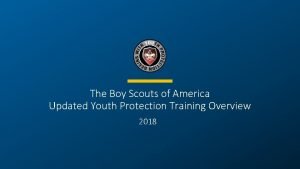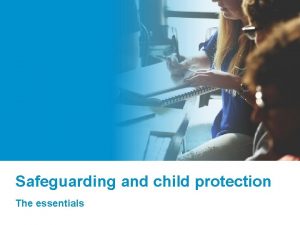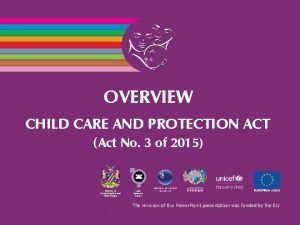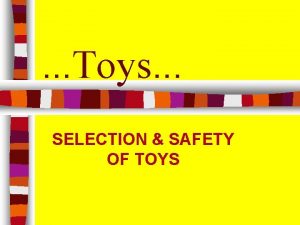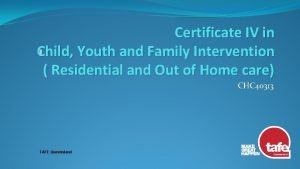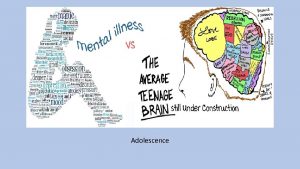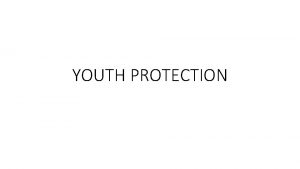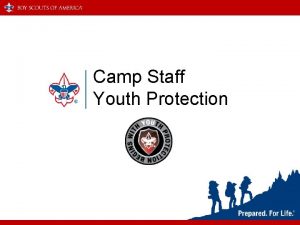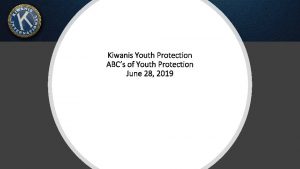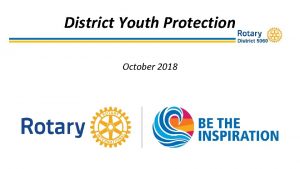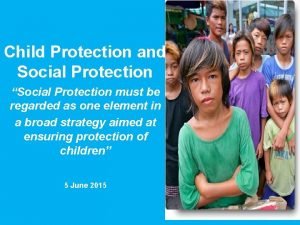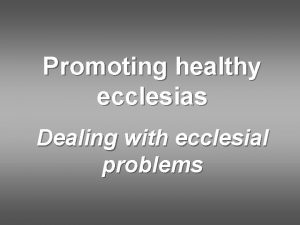Child and youth protection in our ecclesias Child










- Slides: 10

Child and youth protection in our ecclesias

Child abuse • Physical abuse. Physical child abuse occurs when a child is purposely physically injured or put at risk of harm by another person. • Sexual abuse. Sexual child abuse is any sexual activity with a child, such as fondling, oral-genital contact, intercourse or exposure to child pornography. • Emotional abuse. Emotional child abuse means injuring a child's self-esteem or emotional well-being. It includes verbal and emotional assault — such as continually belittling or berating a child — as well as isolating, ignoring or rejecting a child. • Neglect. Child neglect is failure to provide adequate food, shelter, affection, supervision, education or medical care. • Medical abuse. When someone purposely makes a child sick, requiring medical attention, it puts the child in serious danger of injury and unnecessary medical care. This may be due to a mental disorder called factitious disorder imposed on another, such as a parent harming a child.

Sexual abuse • • • rape (forced unwanted sex or sexual acts) indecent assault (indecent behaviour before, during or after an assault child sex abuse/assault (using power over a child to involve them in sexual activity) incest (sexual offences by relatives) sexual molestation.

Sexual abuse indicators • Withdrawal from friends or usual activities • Changes in behavior — such as aggression, anger, hostility or hyperactivity — or changes in school performance • Depression, anxiety or unusual fears or a sudden loss of selfconfidence • An apparent lack of supervision • Frequent absences from school or reluctance to ride the school bus • Reluctance to leave school activities, as if he or she doesn't want to go home • Attempts at running away • Rebellious or defiant behavior • Attempts at suicide

When to worry Check that you’ve noticed a cluster of items, and ask yourself about the • Severity • Duration • Impact of what you’re seeing.

Physical abuse • Unexplained injuries, such as bruises, fractures or burns • Injuries that don't match the given explanation • Untreated medical or dental problems

Sexual abuse • • • Sexual behavior or knowledge that's inappropriate for the child's age Pregnancy or a sexually transmitted infection Blood in the child's underwear Statements that he or she was sexually abused Trouble walking or sitting or complaints of genital pain Abuse of other children sexually

Emotional abuse Delayed or inappropriate emotional development Loss of self-confidence or self-esteem Social withdrawal or a loss of interest or enthusiasm Depression Headaches or stomachaches with no medical cause Avoidance of certain situations, such as refusing to go to school or ride the bus • Desperately seeks affection • A decrease in school performance or loss of interest in school • Loss of previously acquired developmental skills • • •

Parental behaviour • • • Shows little concern for the child Appears unable to recognize physical or emotional distress in the child Denies that any problems exist at home or school, or blames the child for the problems Consistently blames, belittles or berates the child and describes the child with negative terms, such as "worthless" or "evil" Expects the child to provide him or her with attention and care and seems jealous of other family members getting attention from the child Uses harsh physical discipline or asks teachers to do so Demands an inappropriate level of physical or academic performance Severely limits the child's contact with others Offers conflicting or unconvincing explanations for a child's injuries or no explanation at all

Common reactions to abuse Shock and denial: ‘Did this really happen? ’, ‘Why me? ’ Fear of the offender, of being alone, of nothing happening, or of not being believed. Silence Unable to talk about the assault, or to describe what it feels like to have been assaulted, out of fear of being judged. Anxiety You might feel unsafe or unable to relax. Depression Feeling sad or depressed. Guilt and blame You might ask, ‘Why did I go there/allow it/not fight back? ’ Low self-esteem You might lose self-confidence, feel ‘unworthy’, ashamed or ‘dirty’. Isolation Want to be alone, and to isolate from family and friends. Nightmares and flashbacks Images and memories of the assault intrude on daily life and sleep. Mood swings You might find that your mood changes quickly from anger and rage, to tears and despair, and back again. Loss of confidence You might worry about your ability to do your work or study, or lack confidence with friends or your partner. Loss of trust You might find it hard to trust people in your ecclesia, social circle or family.
 Bsa youth protection policy
Bsa youth protection policy Safeguarding and child protection the essentials
Safeguarding and child protection the essentials Children's rights and responsibilities posters
Children's rights and responsibilities posters Child protection and toy safety act
Child protection and toy safety act Child care and protection act 3 of 2015
Child care and protection act 3 of 2015 Child youth and family services act
Child youth and family services act Certificate 4 in child youth and family intervention
Certificate 4 in child youth and family intervention Our youth now love luxury
Our youth now love luxury Awareness of ourselves and our environment is:
Awareness of ourselves and our environment is: Awareness of ourselves and our environment is:
Awareness of ourselves and our environment is: Awareness of ourselves and our environment is
Awareness of ourselves and our environment is
